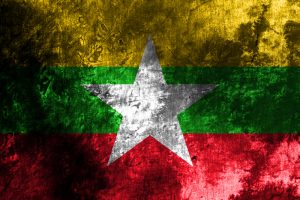Units of a military-aligned ethnic militia in eastern Myanmar have reportedly switched sides and allied themselves with the country’s pro-democracy movement, the first instance of this happening since the February 2021 coup.
According to local media reports, two Border Guard Force (BGF) battalions in Kayah State in southeastern Myanmar, each with about 300 men, joined local resistance forces in a series of recent attacks that destroyed four army outposts and a police station in Mese township.
The BGF battalions are also part of the Karenni Nationalities People’s Liberation Front (KPNLF), which was formed in 1978 by breakaway members of the Karenni National Progressive Party (KNPP), and later signed a ceasefire with the military before setting itself up as a military-aligned BGF in November 2009. The KNPP has been fighting for autonomy since its founding in 1957 and opposes the coup government.
Myanmar Now reported the defections on June 23, citing a member of the KNPP’s central committee. The official said that the members of the two KPNLF units –Battalion 1004, based in Mese Township, and Battalion 1005, based in Bawlakhe Township “took part in the fighting in accordance with the KNPLF’s directions.” The Associated Press reported that the members of the battalions could no longer tolerate the army’s violent attacks in Kayah, which had killed some of their family members.
Kayah State, also known as Karenni State, has experienced a disproportionate share of conflict since the military coup of February 2021. As four local rights activists wrote in these pages in February, more than 40 percent of the Karenni population has been forcibly displaced since May 2021, most of them women and children, while the five townships of Loikaw, Hpruso, Shadaw, Deemaw Soe, and Pekhon “have been almost entirely abandoned” due to junta attacks.
The two BGF battalions were created by the KPNLF as part of the then-junta’s attempt to bring autonomous ethnic rebel groups with which it had ceasefires back into the “legal fold.” On the whole the BGF policy was a failure, but it did see the establishment of around two dozen small BGFs across the country. According to the AP, the country’s BGFs have a total of 10,000 personnel under arms.
While the BGFs are nominally under central command, they in many cases retained de facto autonomy, as did the ethnic armed groups from which they were formed. For instance, a military-aligned BGF is largely responsible, along with Chinese criminal syndicates, for the development of Shwe Kokko, a center of scam operations and illegal gambling in Kayin State. Earlier this month, Thailand’s Provincial Electricity Authority (PEA) cut the power supply to Shwe Kokko and an adjacent region in Kayin State at the request of the Myanmar junta.
As Myanmar Now reported, the two BGF battalions in Kayah State joined resistance forces in a series of coordinated attacks on three military outposts and a police station in Mese Township on June 13, which resulted in the capture of all four junta targets. Late last week, two more junta outposts reportedly fell to the insurgents. The attacks involved the Karenni Army, the KNPP’s armed wing; the Karenni Nationalities Defense Force; and the Karen National Liberation Army. It also involved fighters from the People’s Defense Force formed by the opposition National Unity Government in 2021 to oppose the coup regime.
Despite rumors dating back to last year, this is the first confirmation that the KPNLF fighters have taken part in anti-regime operations. While the KNPLF issued a statement condemning the military takeover in February 2021, it did not join the resistance front, preferring to watch and wait.
The defections are an alarming sign for the military administration. Above all, they are an indication that the existing agreements binding the junta to ethnic insurgent groups and militias are arrangements of convenience that are liable to dissolve as the weight of resentment toward the military continues to accumulate. While this does not in itself mark a turning of the tide for the nationwide resistance, the unit-level defections represent one more bleeding wound on the junta’s flank.













